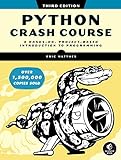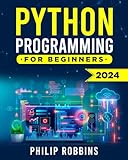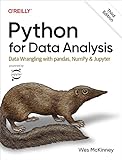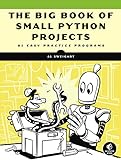Programming is the process of creating a set of instructions to enable a computer to perform a specific task or solve a problem. It involves writing code using a specific programming language, such as Java, Python, or C++. Programming requires logical thinking, problem-solving skills, and attention to detail. Programmers use algorithms and data structures to solve complex problems and create software applications or systems. Programming can be used in various fields, such as web development, software engineering, artificial intelligence, and data science. It is a highly valuable skill in today's technology-driven world and has become an essential part of almost every industry.
What is the role of compilers in programming?
Compilers play a crucial role in programming by translating high-level programming languages into machine code that can be executed by a computer. This process involves several steps, including lexical analysis, syntax analysis, semantic analysis, code optimization, and code generation.
By translating code into machine code, compilers allow programmers to write applications in languages that are easier to understand and maintain, while still being able to run efficiently on a computer. Additionally, compilers can also check for syntax errors and other mistakes in the code, helping to improve the overall quality and reliability of the software being developed.
Overall, compilers act as a bridge between high-level programming languages and machine code, enabling programmers to write code in a more natural and efficient manner, while still being able to take advantage of the performance benefits of directly interacting with a computer's hardware.
How to use APIs in programming?
To use APIs in programming, follow these steps:
- Understand the API: Read the API documentation to understand its functionalities, endpoints, required parameters, and response format.
- Obtain an API key: Some APIs require an API key to access their services. Sign up for an account on the API provider's website to obtain the key.
- Make a request: Use a programming language or tool (e.g., cURL, Postman, Python) to make a request to the API endpoint with the required parameters and your API key.
- Receive the response: The API will process your request and send back a response, typically in JSON format. Parse the response data to extract the information you need.
- Handle errors: Check the response status code for any errors and handle them gracefully in your code.
- Implement the API functionality: Use the API response data in your application to leverage the services provided by the API.
- Secure your API key: Keep your API key secret and avoid sharing it publicly to prevent unauthorized access to your account.
By following these steps, you can effectively use APIs in your programming projects to integrate external services and functionality into your applications.
What is the concept of inheritance in object-oriented programming?
Inheritance is a fundamental principle in object-oriented programming that allows a new class to inherit attributes and behaviors from an existing class. The existing class is referred to as the superclass or parent class, and the new class is called the subclass or child class.
By using inheritance, a subclass can reuse the attributes and methods of its superclass, promoting code reusability and making it easier to create and maintain code. The subclass can also add new attributes and methods, or override existing ones from the superclass.
Overall, inheritance allows for creating a hierarchy of classes where subclasses inherit common attributes and behaviors from their superclass, while providing the flexibility to customize and extend functionality as needed.
How to use loops in programming?
Loops in programming are used to repeat a block of code multiple times. There are different types of loops in programming languages, such as for loops, while loops, and do-while loops. Here is how you can use loops in your programming:
- For loop: A for loop is used when you know how many times you want to execute the block of code. The syntax of a for loop looks like this:
1 2 3 |
for(initialization; condition; increment/decrement) { // code to be executed } |
Example:
1 2 3 |
for(int i = 0; i < 5; i++) { System.out.println(i); } |
- While loop: A while loop is used when you want to repeat a block of code as long as a condition is true. The syntax of a while loop looks like this:
1 2 3 |
while(condition) { // code to be executed } |
Example:
1 2 3 4 5 |
int i = 0; while(i < 5) { System.out.println(i); i++; } |
- Do-while loop: A do-while loop is similar to a while loop, but the code block is executed at least once before the condition is checked. The syntax looks like this:
1 2 3 |
do { // code to be executed } while(condition); |
Example:
1 2 3 4 5 |
int i = 0; do { System.out.println(i); i++; } while(i < 5); |
By using loops in your programming, you can save time and effort by automating repetitive tasks. Loops are essential in programming to iterate over data structures, process arrays, and perform calculations. Practice using loops in your code to become more proficient in programming.
What is the role of libraries in programming?
Libraries play a crucial role in programming by providing pre-written code, functions, and resources that developers can use to perform specific tasks. These libraries help developers save time and effort by allowing them to leverage existing code rather than writing everything from scratch.
Libraries also help to promote code reusability, improve efficiency, and reduce the likelihood of errors in programming. They can cover a wide range of functionalities, such as data processing, user interface design, networking, and much more. Many popular programming languages, frameworks, and platforms have extensive libraries available for developers to use in their projects.
Overall, libraries are an essential component of programming that enable developers to build robust and feature-rich applications quickly and efficiently.
How to set up a development environment for programming?
Setting up a development environment for programming involves several steps depending on the programming language and tools you want to use. Here is a general guide to set up a development environment for programming:
- Choose a programming language: Decide which programming language you want to work with. Some popular programming languages include Python, Java, JavaScript, C++, etc.
- Install a code editor or Integrated Development Environment (IDE): Download and install a code editor or IDE that supports the language you have chosen. Some popular code editors and IDEs include Visual Studio Code, IntelliJ IDEA, Eclipse, Sublime Text, etc.
- Install the necessary tools and libraries: Depending on the programming language, you may need to install additional tools and libraries. For example, if you are working with Python, you may need to install the Python interpreter, pip package manager, and any libraries you may need for your project.
- Set up a version control system: Consider using a version control system such as Git to track changes to your code and collaborate with others. Install Git and set up a repository for your project.
- Configure your development environment: Customize your code editor or IDE settings to suit your preferences. Install any plugins or extensions that may improve your workflow.
- Start coding: Once everything is set up, you can start coding and building your project.
Remember that setting up a development environment can vary depending on your specific needs and the language you are working with. It may take some time to configure everything according to your preferences, but having a well-organized and efficient development environment can greatly improve your productivity as a programmer.









